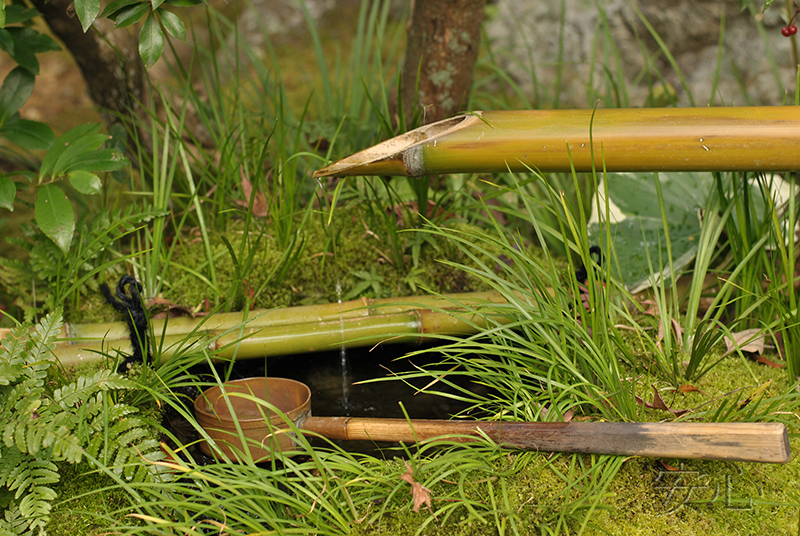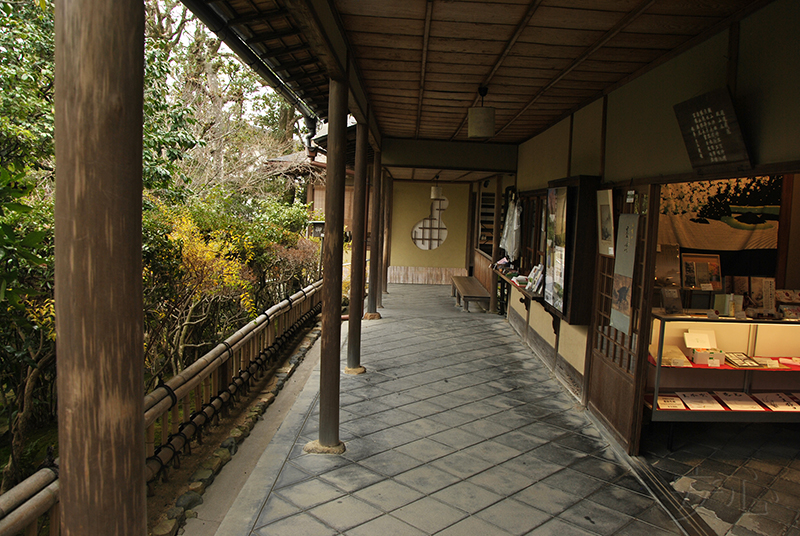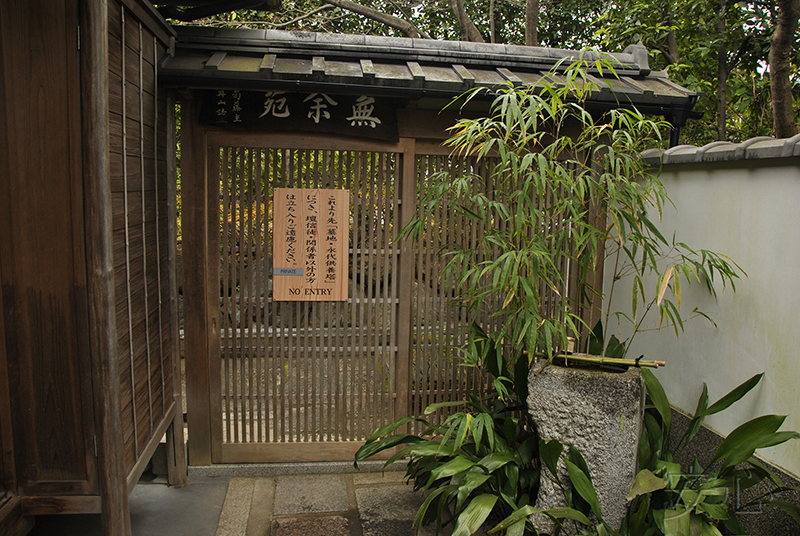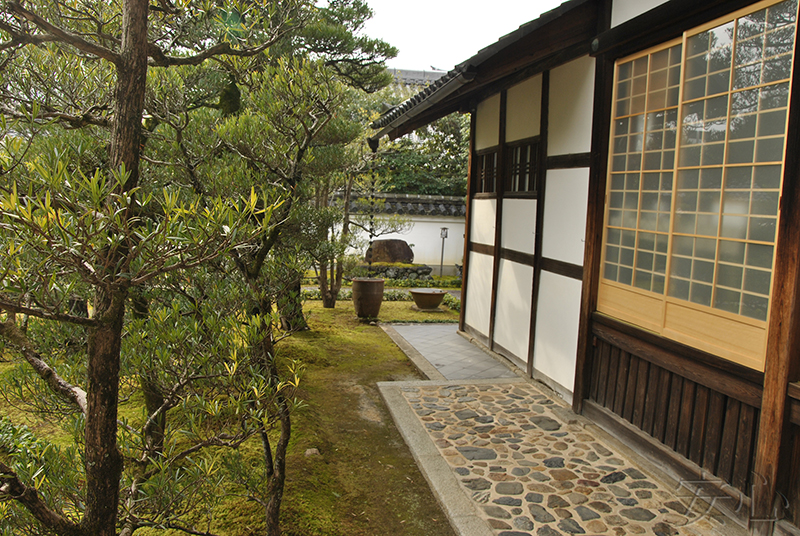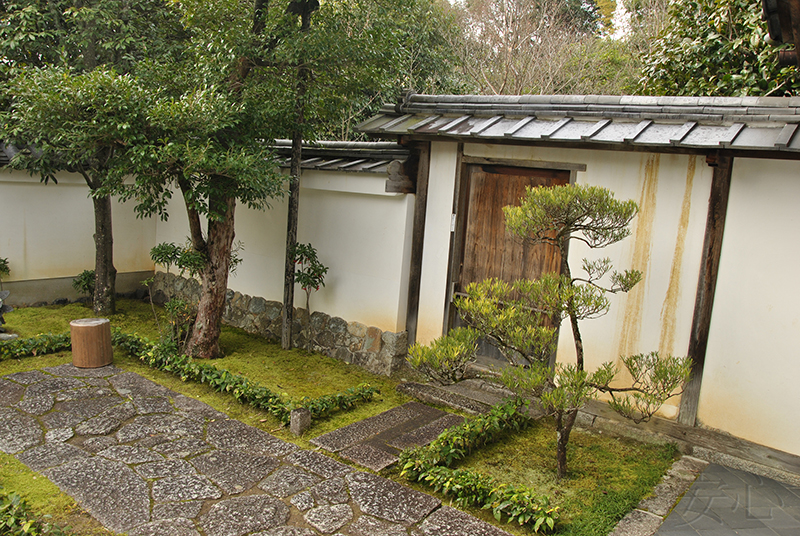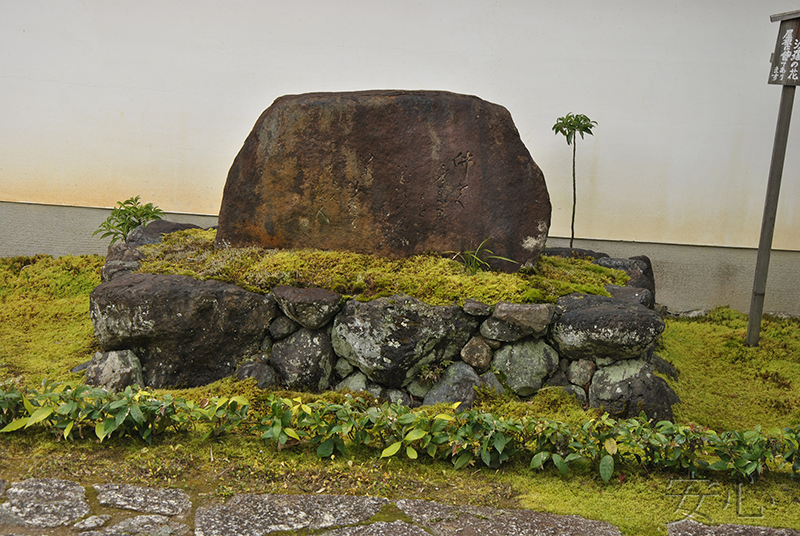
Taizo-in temple gardens
Taizo-in is one of forty-six sub temples of the Buddhist temple Myoshinji. On its territory there are several gardens of different types open to the public all year round.
Most of all we were interested in the Yoko-en strolling garden with its famous stream and waterfall. However, other gardens were also very interesting.
The entrance to the territory of the temple is through an impressive gate.
At the end of the building on the right is the office where we bought tickets, on the left the road leads to the garden.
We walked down a long corridor.
On the way we saw a statue.
At the end of the corridor is another gate, Dai-genkan. In the past, there were strict rules regarding entry and exit through this gate: only the emperor and his family members had the right to pass here.
Behind the gate, near the headquarters of the Hojo Temple, is the first garden. It was created in the 16th century by the renowned painter and Zen master, Motonobu Kano, a follower of the school his father founded.
Unfortunately, the passage to the building, from where the garden is clearly visible, is closed. So we had to settle for a side view.
And this is the main building itself. Dry Garden Motonobu Kano adjoins the end of the house.
Opposite the building, the territory is fenced and covered with moss. A bush is planted in the center.
Then you need to turn the corner and again to go along the corridor, this time rather narrow.
At the end there is another sculpture. Most likely, it is Buddha-Jizo. In Japan, it is believed that the souls of children who died before their parents cannot cross the Senju River and to go to the afterlife, since they caused grief to their parents and they have no merits. As a punishment for this, they must work - endlessly stacking pebbles. Jizo saves the children by hiding them from the demons in the sleeves of his clothes. Often you can see piles of stones nearby, which people put in the hope of reducing children's suffering.
Jizo is usually depicted as a monk dressed in a cassock and with a halo around his head.
After looking at the statue, we head along the road to the third gate.
Behind this gate are the dry gardens of Yin and Yang. On the left is the Yang garden, with dark stones on light sand.
On the right is Yin garden. The stones are lighter and the sand is darker. However, on that day, someone mercilessly destroyed the beauty by walking across the sand and ruining the drawing.
In the center, between these gardens, on a low hill, there is a huge cherry blossom, which is more than 50 years old. It will bloom in early April, and, apparently, the sight will be unusually beautiful!
Sakura is located at the beginning of the hill, which can be bypassed from two sides.
And finally, we are in the Yoko-en garden. This is a relatively young garden, made only 50 years ago by the famous designer Kinsaku Nakane. The main character here is a stream, it is already visible from the turn.
There is a gazebo at the top of the hill. True, it was not possible to admire the views from there, as the approach was closed.
After walking a little further, we found suikinkutsu. However, even when we got close, we heard nothing but the splash of water pouring from the bamboo chute into the bowl. Unfortunately, at that time we didn’t know yet that we needed to use a bamboo chute placed next to it. Through it, the music of dripping water will be clearly heard. If you get a chance to visit this garden, be sure to listen!
There is a souvenir shop nearby. Here you can also pay for tea, which is served in a tea house located at a distance.
Daikyuan tea house.
It is quite long and has many big windows. At the end of the passage there is a toilet, separated from the building by a fence. Next to it is a tall bowl of water.
Opposite the tea house is a moss-covered lawn framed by trees and bushes.
The edges of the hills are lined with stones. They not only hold the ground, but also make garden maintaining easier, preventing moss from creeping out of hill borders. The same stones are at the well next to the entrance.
We returned to the path leading to the stream. Part of the path goes under a wide pergola where wisteria blooms in spring.
From here you can see the bridges in the stream.
But most of all we were impressed by dense arrays of azalea. How beautiful they probably look during flowering!
The whole stream is visible only when you reach the middle of the pergola.
But to my great regret, we couldn't get close to the waterfall.
There is an isthmus next to the bridge, through which water flows.
In the left corner there is a small waterfall.
At the end of the pergola, there is a gazebo where you can sit, relax, and even drink tea on a large comfortable table.
And this is how the garden looks from the gazebo.
After sitting on a bench for a while, we went to the exit. However, judging by the plan of the Myoshin-ji complex, there should also be another gardens or small courtyards. And we decided to wander around the territory. First, we found one small garden at the Nehando temple.
Some gardens were closed.
We discovered another temple called Torin-in with the pretty garden.
And a few more photos of the Myoshin-ji Temple itself. It consists of two buildings connected by a covered gallery.
There are a lot of temples on the territory, including those with beautiful gardens, but it is not so easy to find them, and our time was limited. There is a stand with a detailed plan of Myoshin-ji, but, unfortunately, only in Japanese.
But the advertising brochure contains a map of the Taizo-in Temple.
Undoubtedly, the Taizo-in Temple Garden is one of the most beautiful and spectacular gardens. And, if you come to Kyoto, be sure to include it in your program. There is something to see here at any time of the year. Sakura, wisteria and azalea bloom in spring. In summer - hydrangeas, lotuses and nymphs. Autumn will delight you with bright colors of falling leaves. Well, in winter, in addition to camellias, you will enjoy the clear graphics of trimmed bushes and a ringing silence, broken only by the sounds of pouring water. Indeed, in winter there are few tourists in Japan, and there is a good chance to be alone with a beautiful garden.
Garden Information:
Address: 35 Myoshinji-cho Hanazono Ukyo-ku, Kyoto 616-8035
Opening hours: from 9 a.m. to 5 p.m.
anshin©2011All rights reserved. When using the materials of the site, reference is obligatory.
Proposals for co-operation, as well as comments and suggestions on the site please send to the address: anshinsad@gmail.comtel: +7 (965) 121-80-60, 10am-20pm






















